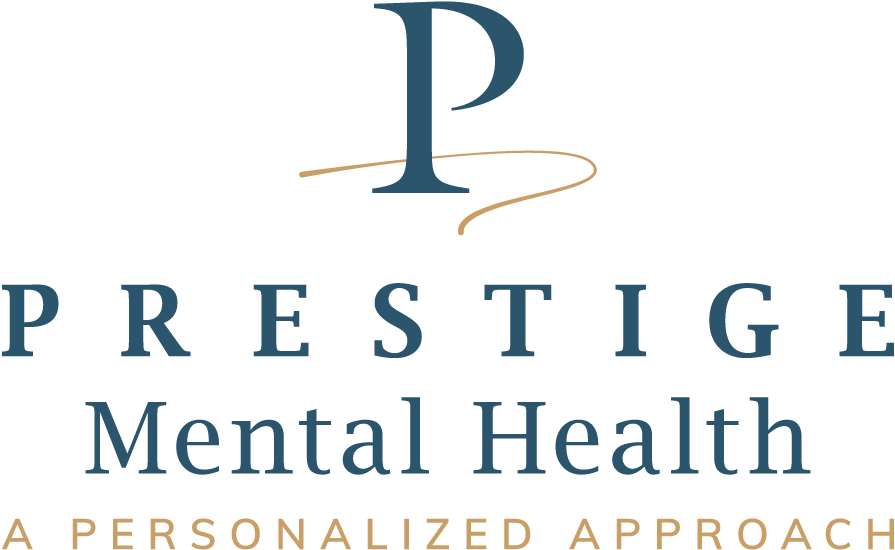A panic attack is an intense wave of fear or discomfort that can seem overwhelming, often striking without warning. While some may experience only a single episode in their lifetime, others may endure frequent, recurrent attacks that disrupt their daily lives. At Prestige Mental Health in Las Vegas, Dr. April Sullivan offers guidance and treatment to help individuals understand and manage panic attacks. This article explores the nature of panic attacks, their symptoms, possible triggers, and the practical steps available for those affected.
What is a Panic Attack?
Panic attacks are sudden episodes of intense fear, often accompanied by physical and cognitive symptoms. These episodes may peak within minutes and can leave the person feeling drained and overwhelmed. A panic attack can happen without a clear trigger, making it especially unsettling for those who experience them. During an attack, individuals may feel as if they are losing control, having a heart attack, or even dying.
Panic attacks are often classified into two categories: unexpected and expected. Unexpected attacks occur without any obvious cause, while expected ones might happen in response to specific triggers, such as crowded spaces or public speaking. Although panic attacks are not dangerous, they can feel intense and frightening.
Recognizing the Symptoms of a Panic Attack
The symptoms of a panic attack can vary from person to person, but they generally involve both physical and emotional experiences. Common symptoms include:
- Chest Pain or Tightness: Many people experiencing a panic attack report chest pain or tightness, which can feel similar to a heart attack, adding to the distress.
- Increased Heart Rate: A rapid or pounding heart is a frequent symptom that may make individuals feel as though they are about to lose control or faint.
- Shortness of Breath: Panic attacks often cause difficulty breathing, and some may feel as though they are suffocating.
- Sweating or Chills: Temperature changes, including sudden sweating or feeling cold, are common during an attack.
- Dizziness or Lightheadedness: Some people feel dizzy, unsteady, or even disoriented.
- Nausea or Stomach Upset: Panic attacks can trigger digestive discomfort, including nausea or stomach cramps.
- Fear of Dying or Losing Control: Intense fear, even to the point of fearing death, is a typical part of a panic attack.
These symptoms can make it hard for individuals to distinguish a panic attack from other serious conditions, such as heart issues, which is why understanding these signs is crucial. Recognizing that these symptoms stem from a panic attack—and not an immediate threat—can be the first step toward managing them.
Causes and Triggers of Panic Attacks
The precise causes of panic attacks remain uncertain, but a blend of genetic, psychological, and environmental factors likely plays a role. Individuals with a family history of panic disorders or anxiety may be at a higher risk of experiencing panic attacks. Additionally, other factors, such as major life stressors, trauma, and chronic anxiety, can increase susceptibility to panic attacks.
Certain situations or environments can also serve as triggers. Here are some examples:
- Social or Performance Situations: Fear of judgment or failure in social scenarios may lead to panic attacks in individuals prone to anxiety.
- Specific Phobias: Being exposed to an object or situation that triggers a phobia, such as heights or confined spaces, can result in an expected panic attack.
- Traumatic Memories or Situations: Encounters that remind individuals of past traumatic events can sometimes trigger panic attacks.
- Physical Illnesses: Certain medical conditions, like thyroid problems or heart disease, can also provoke symptoms similar to panic attacks, exacerbating anxiety and leading to an episode.
- Stimulants: Substances like caffeine, certain medications, or recreational drugs can increase heart rate and may trigger or worsen panic attacks.
Understanding personal triggers can be useful in learning how to manage panic attacks. However, because panic attacks often strike unexpectedly, it’s equally important to develop techniques to handle symptoms when they arise.
Strategies for Managing Panic Attacks
Managing panic attacks can be challenging, but there are effective techniques to help individuals regain control during an episode. Dr. April Sullivan and the team at Prestige Mental Health provide guidance on these methods, which include both immediate strategies and long-term practices for better overall management.
1. Deep Breathing Techniques
One of the quickest ways to address a panic attack is by focusing on slow, deep breaths. When panic sets in, breathing may become shallow, exacerbating symptoms like dizziness and chest tightness. By concentrating on deep breathing—inhale slowly through the nose for a count of four, hold for four, then exhale for four—you can help calm your body’s response.
2. Grounding Exercises
Grounding exercises can divert attention away from the distress of a panic attack by redirecting focus. Techniques like the “5-4-3-2-1” method involve naming five things you can see, four you can touch, three you can hear, two you can smell, and one you can taste. This can help refocus your mind on the present moment, making the attack feel less overwhelming.
3. Progressive Muscle Relaxation
This technique involves tensing and relaxing different muscle groups, which helps reduce physical tension and may alleviate symptoms. Start from your toes and work up through your body, tensing each muscle group for a few seconds before releasing. This practice encourages a state of relaxation that counters the physical strain of a panic attack.
4. Mindfulness and Acceptance
Mindfulness techniques encourage individuals to observe their feelings and bodily sensations without judgment. During a panic attack, rather than fighting the sensations, mindfulness teaches you to acknowledge and accept them as temporary experiences that will pass. This perspective can reduce the intensity of the attack.
5. Regular Physical Activity
Engaging in regular exercise, such as walking, jogging, or yoga, can significantly help manage anxiety levels and reduce the frequency of panic attacks. Exercise releases endorphins, which act as natural mood lifters and promote a sense of well-being.
6. Seeking Professional Support
Therapies like Cognitive Behavioral Therapy (CBT) and exposure therapy can help individuals understand the root causes of their panic attacks and develop healthier responses. CBT, for instance, addresses negative thought patterns and provides techniques for reframing them, which can minimize panic attack frequency and severity.
Lifestyle Adjustments for Long-Term Management
While immediate strategies can help individuals manage panic attacks as they happen, lifestyle adjustments can aid in long-term management. Here are a few recommendations to consider:
- Reduce Stimulant Intake: Cutting back on caffeine, alcohol, and nicotine can help minimize anxiety and lower the likelihood of panic attacks.
- Maintain a Balanced Diet: Consuming nutrient-rich foods helps stabilize blood sugar levels, which may prevent irritability and anxiety spikes.
- Prioritize Sleep: Poor sleep can exacerbate stress and anxiety. Establishing a consistent sleep routine and creating a calming bedtime ritual may improve resilience against panic attacks.
- Stay Connected: Engaging in social activities and maintaining supportive relationships can serve as a buffer against anxiety. Building a strong support network can also make it easier to manage stressors that might otherwise trigger panic attacks.
Helping Others Understand Panic Attacks
Educating family and friends about panic attacks can improve their ability to support those affected. Providing loved ones with resources and encouraging open communication can foster a compassionate environment that aids in recovery. It’s important for friends and family to understand that panic attacks are not merely overreactions but are intense, physiological events that the individual cannot simply “snap out of.”
Learning what to do in the moment—such as reminding the individual to breathe slowly or using grounding techniques together—can help mitigate the impact of an attack and build trust.
Moving Forward with Confidence and Control
For individuals who experience panic attacks, gaining an understanding of the disorder and learning effective management strategies can make a significant difference. At Prestige Mental Health in Las Vegas, Dr. April Sullivan is committed to helping individuals with panic attacks regain control, offering a supportive approach tailored to each person’s needs. With the right tools, individuals can manage their panic attacks more confidently and achieve greater peace in daily life.
Whether through therapy, lifestyle changes, or immediate strategies, panic attacks are manageable. By working with a mental health professional, people can reclaim their sense of security and feel empowered to face life’s challenges without fear of the next attack.
Sources:
- Barlow, D. H. (2002). Anxiety and Its Disorders: The Nature and Treatment of Anxiety and Panic (2nd ed.). Guilford Press.
- Craske, M. G., & Stein, M. B. (2016). Anxiety and Panic Attacks: Mechanisms and Interventions. Annual Review of Clinical Psychology.
- Clark, D. M., & Ehlers, A. (1993). Panic Disorder: Empirical Findings and Theoretical Issues. In R. Hadwin & A. M. Clark (Eds.), Anxiety and Related Disorders






